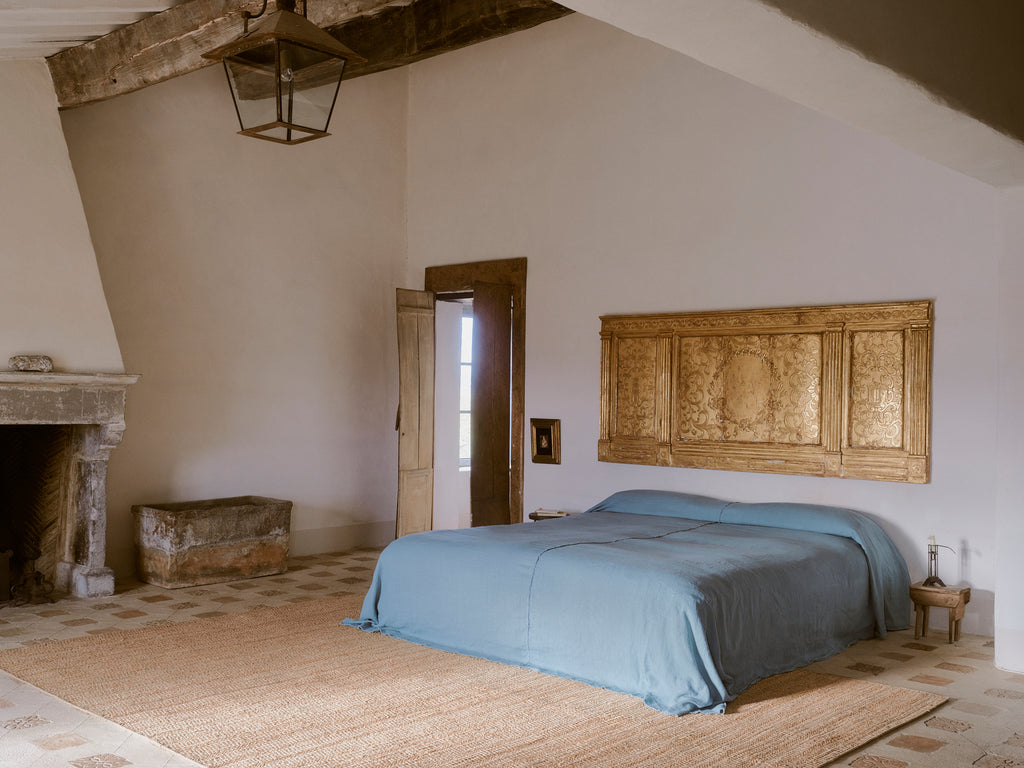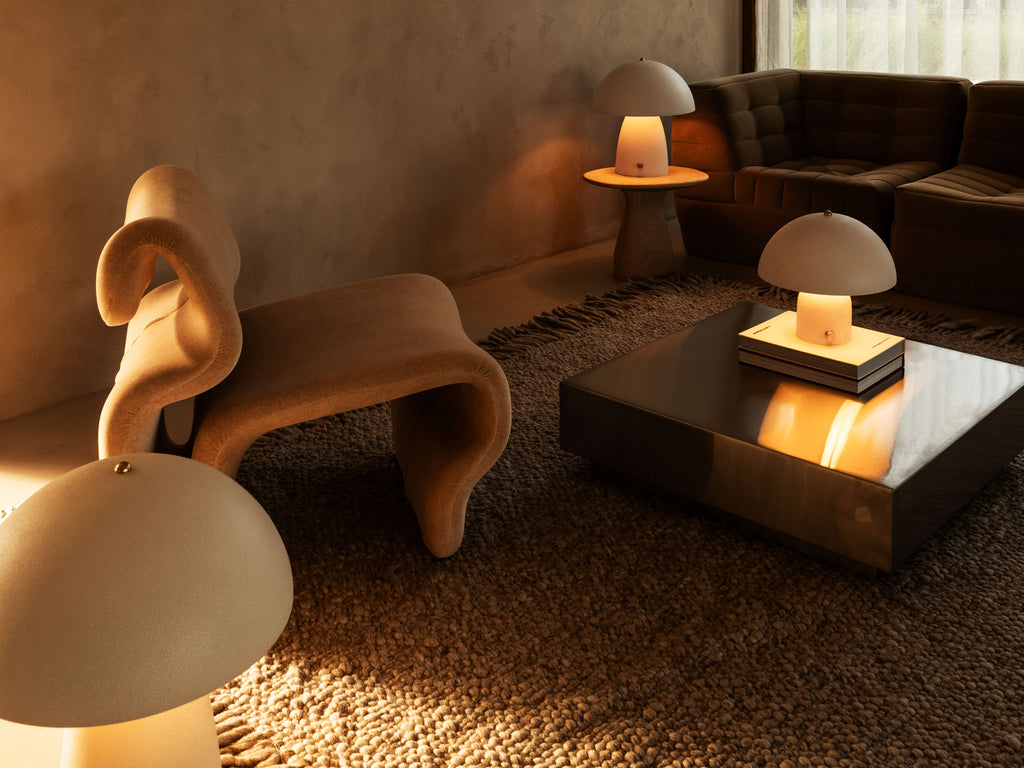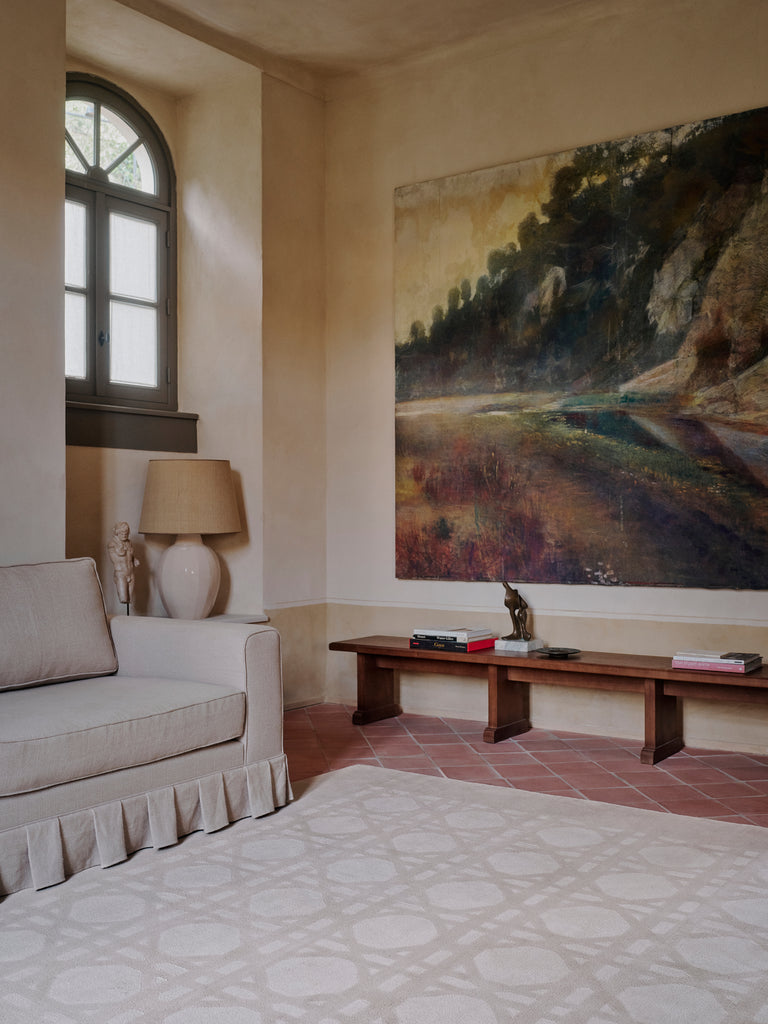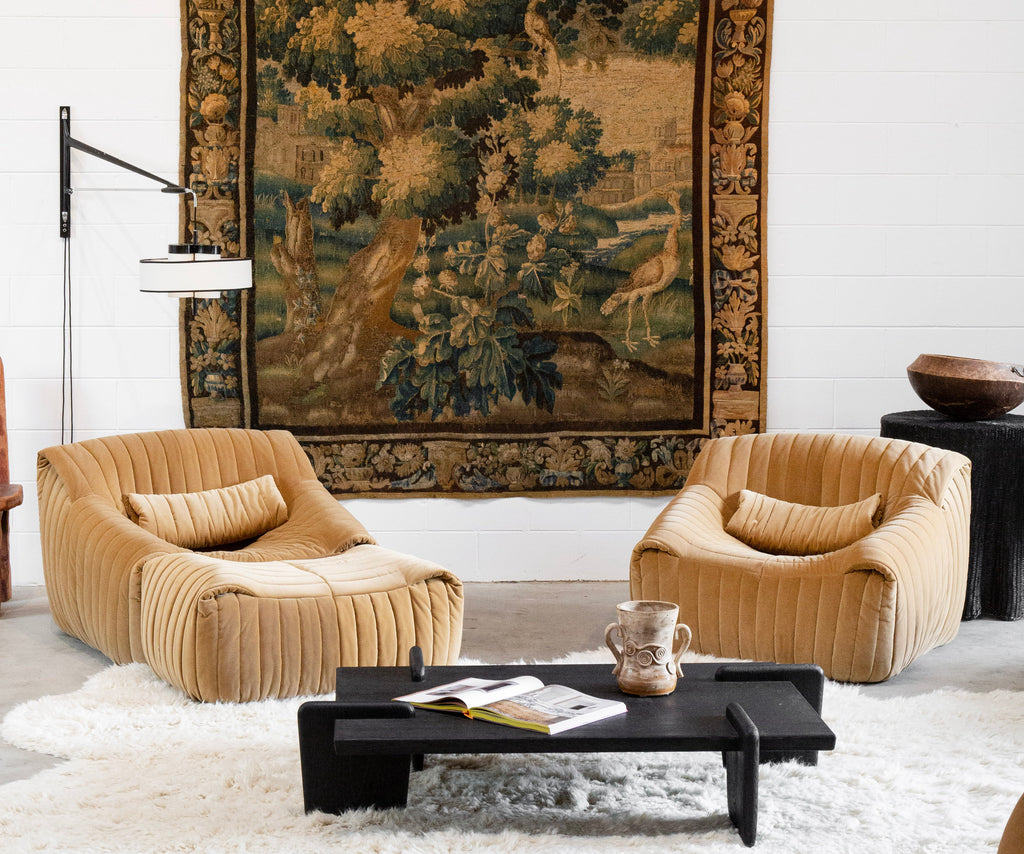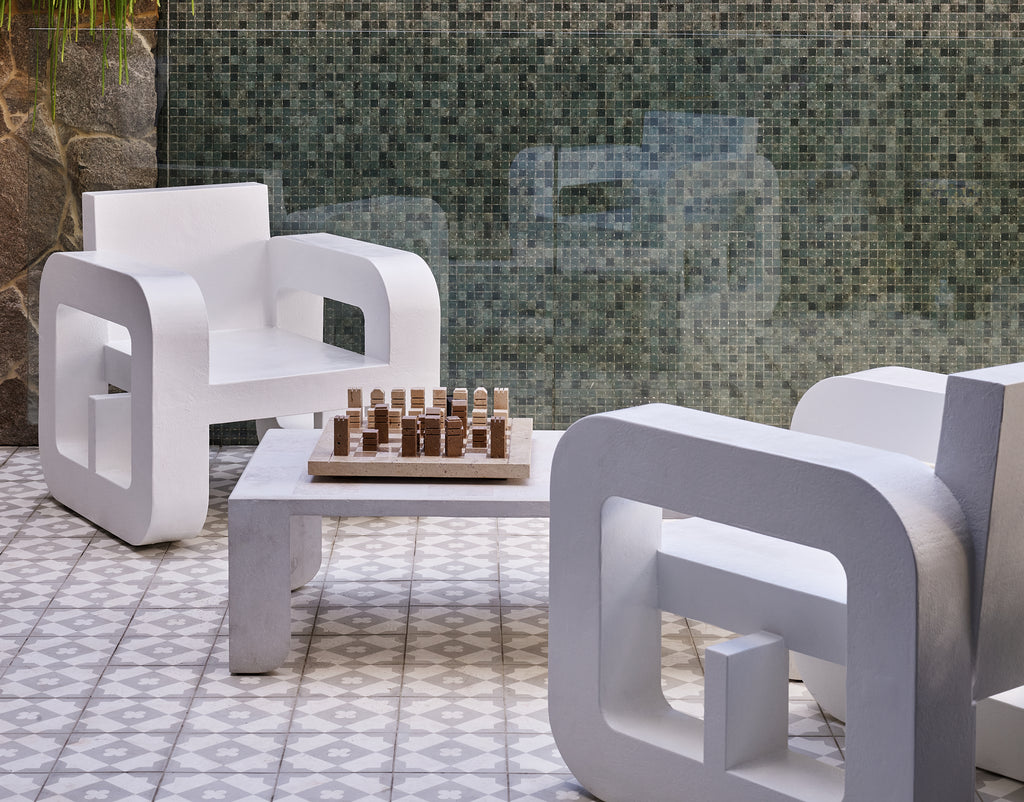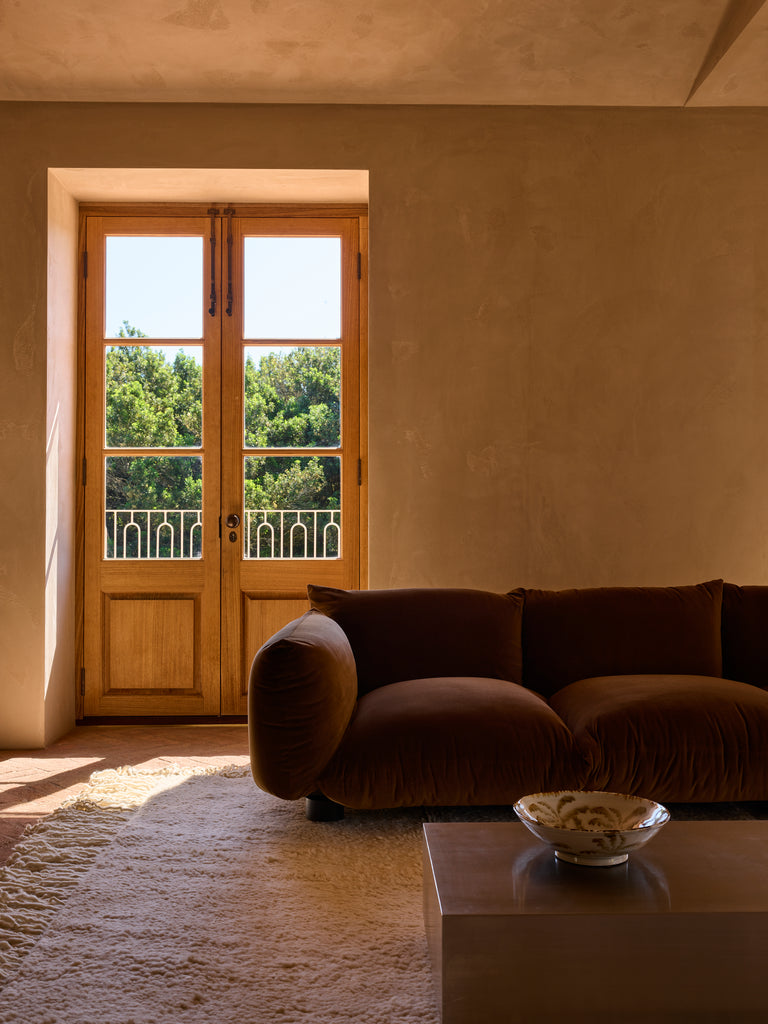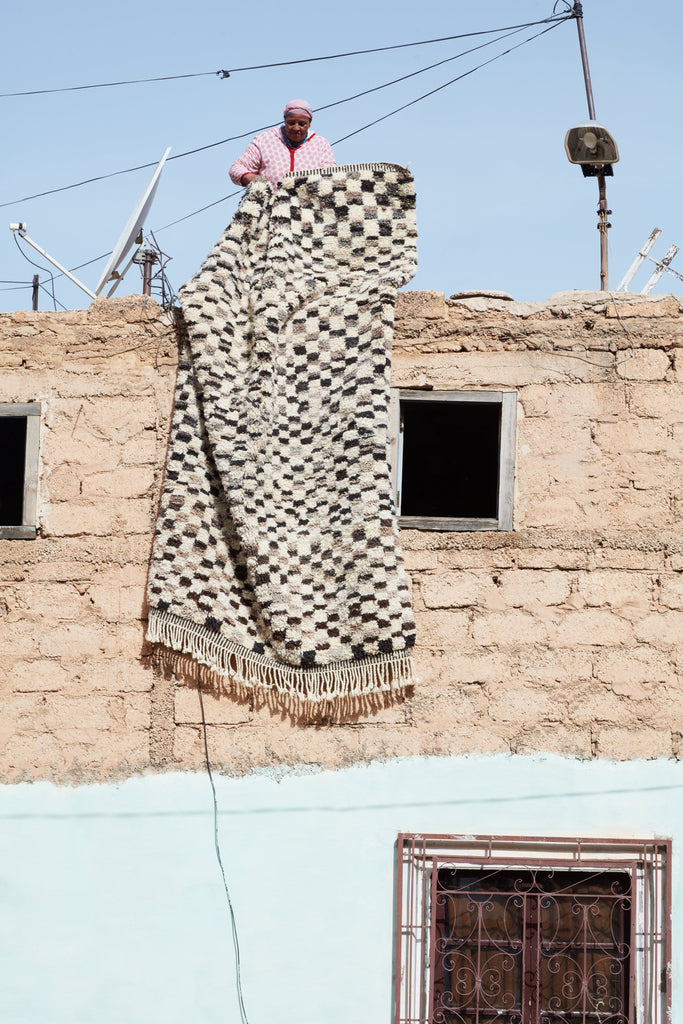
Tête-à-tête
Equilibrium of Form. The work of French ceramicist Catherine Dix.
In her forest-surrounded home nestled in Brantôme, France, Catherine Dix conjures ceramic bottles with a captivating quality, hinting at anthropomorphic traits while maintaining a resolute structure.
It was in 2012 that Catherine shifted from the realm of fashion and delved into the world of ceramics, craving the tactile experience of crafting by hand.
Initially drawn to bottles as sculptural objects, Catherine's work evolved into hybrid forms, blending sculpture with architectural elements. Her first creation, inspired by a 1930s bottle, served as the spark igniting her journey into the exploration of form and the delicate equilibrium within its spatial context.
In her previous collaboration with Tigmi, Catherine explored geometric abstraction. Her newest collection draws inspiration from architecture and the nostalgic reminiscence of childhood toys.
Rejecting the veneer of sophistication in favour of a primal, unrefined aesthetic, her pieces capture an enigmatic aura, evoking a sense of antiquity and mystique.
Your foray into ceramics began in 2012. What sparked your interest, and could you describe the journey of creating your very first piece?
I was working in fashion as a shoe designer and head of accessories, and even though I designed and followed the prototyping process for the models, a large part of it was carried out by others. I felt the need to control the creation from start to finish, and I'd been drawn to manual work for a long time. During my first contact with clay in 2012, I wanted to reproduce a bottle from the 1930s that I had discovered in an old book on ceramics. The proportions were perfect and the simplicity of the shapes appealed to me. I interpreted it in my own way and I still have it, and cherish it as the starting point for many bottles since.
Your initial connection to working with bottles and vessels is intriguing. What drew you to these forms initially, and how have they evolved in your artistic practice?
I never thought of making functional objects. The bottle is a pretext for constructing a form from different elements, seeking balance. I've distanced the bottle from its function, making it almost alive and architectural at the same time. I've added legs to give it height and further confuse the issue. There are an infinite number of possible variations on this simple object. Depending on the shape of the body, the placement of the neck and handle, the choice of cylindrical or tripod feet, it will have a completely different identity each time. My bottles have become hybrid objects, archaic sculptures, creatures or lunar vehicles.
Your works are often described as 'small architectures with complex shapes.' How do you navigate the delicate balance between art and functionality in your ceramics?
As soon as an object has a container base, it is automatically considered as having a function. As I said, I think of my objects as sculptural pieces without any function. In fact, my bottles are totally impractical as everyday objects, and the clays I use are often porous because they contain a lot of grog.
Grog is fired clay that has been crushed and reduced to a certain particle size, then added to raw clay to make it more refractory and give it greater strength. These clays have a rougher appearance, which is what I'm looking for.



Tell us about the latest pieces you have created for Tigmi? What themes or inspirations did you explore in these creations?
The last piece I created for Tigmi was very geometric. All the elements start from a cylindrical base: the neck of course, the body, the foot and even the handle, which was a ring. I wanted to take a single shape and apply it to all the elements of the bottle. The glaze was a white crawling glaze on a red stoneware. There are many inspirations here: design, architecture and children's toys. I work on very small collections of pieces that will all be unique within that collection. I decide on the clay I'm going to use (I work with 3-4 different clays), then I choose the type of body shape for the bottle, rather round or with a flat top, then the type of feet, cylindrical, bipod, tripod... I then proceed to assemble all these elements by varying the placement, heights and lengths. The final operation is the assembly of the handle. Its placement and its line will clarify the identity of the bottle, this is the operation that I prefer.
"I believe that we all have a little mystery and archaism in us. I think I express this unconsciously through my work, perhaps it comes from the person I was in a previous life in the archaic era!"
The raw and almost unfinished appearance of your ceramics is distinctive. What draws you to this aesthetic, and how does it contribute to the character of your pieces?
I like to counterbalance the very constructed side of my pieces with the raw aspect of the clays I use. I am more attracted to objects with a primitive aspect, imperfection rather than what is sophisticated. I like simple and well-constructed objects without too much detail but where you can feel the material they are made of. The clay becomes the decoration. I think that this approach and the rough side of my surfaces give my pieces something of a vestige and a strong personality.



Your work has a sense of mystery and archaic origins. How do you intentionally infuse these elements into your creations?
I believe that we all have a little mystery and archaism in us. I think I express this unconsciously through my work, perhaps it comes from the person I was in a previous life in the archaic era! On a more serious note, I don't draw much and prefer to get straight down to the clay. I let my instincts guide me, I don't really know where it all comes from.
What would be some of your most surprising influences?
Eduardo Chillida, Sonia Ferlov Mankoba, Alberto Giacometti, Miquel Barcelò, Enrique Mestre, Wim Borst, Valentine Schlegel, Frank Lloyd Wright and so many others in art but also music, cinema…
Brantôme, France is where you call home. How do you feel this location influences your work? Or does your location influence your work?
I'm surrounded by forest and even though nature influences me in my personal life, I don't think it influences me in my work. I am a city and asphalt person and that is ingrained in me!
Tigmi translates to 'my home' in the Berber language. How do you envision your ceramic creations becoming a part of the homes they are destined for?
I hope to bring beauty and joy to the eyes through my work and that my pieces embellish the space that has been chosen for them. But also that they will interact and live alongside other objects, that a dialogue will be created. There are objects in my home that I like more than others and I like knowing that they are there. I enjoy looking at them, they accompany me and will follow me wherever I live. I hope my objects provide that in others.
Looking ahead, what exciting projects or directions do you envision for your artistic journey Catherine?
I am working on larger pieces and this year will be devoted to more sculptures strictly speaking. I started working on columns, very minimalist architectural sculptures, and pure construction. I think about sets as installations with variations in height. It’s a work in progress and it’s very exciting to be heading down this path. I may have an exhibition in June here in my new region and another planned for September in Evian in a brand new gallery.
_
Catherine Dix's latest collection has just arrived to the Tigmi studio. Available exclusively with Tigmi.


